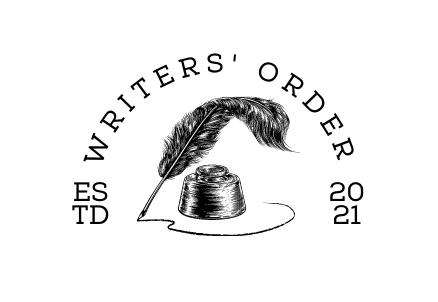You have to be the change to bring the change.

How to Price Your Art?
Our content is reader-supported. We may earn a commission if you make a purchase through one of our links.
While working on a painting, rarely does anyone say to themselves, “this brushstroke was worth $25, and this varnish coat adds $100 to the price of my artwork.” Making art is a creative process that stimulates your imagination and senses, so quantitative deals aren’t the best domain of most artists.
It even seems counterintuitive in theory; how do you place a monetary tag on the emotions that drove the art or the ungodly hours you spent passionately working on a project? Yet, art businesses are not a product of modernity and have been around for ages.
For instance, during different art movements in the Renaissance and Baroque eras, the catholic clergy and other sponsors typically commissioned artists. Many of the masterpieces that we revere today, including Da Vinci’s The Last Supper and Michelangelo’s Creation of Adam, only exist because authorities with resources funded them.
Besides, art is a full-time career for many, and it allows you to dwell in entrepreneurship too. You can now implement your ideas in designs, pricing, exhibitions, commissions, and other facets of having a creativity-based career. Making a living out of your work requires consistent effort and innovation, while following good financial practices. But it is also a fun journey.
Whether you have years of artistic experience under your belt or you are just testing the waters, the price of your artwork can have a massive say in the impact (and sales) you make. While overpricing can repel customers straightway, underpricing is essentially exploiting yourself. Hence the need for that sweet spot between the two.
Before we delve into formulas, here are some steps you can take for a better insight into the pricing issue.
Look Around and See What Others Are Doing
As an artist, there are huge chances that you gravitate toward people with similar hobbies and interests. Consider consulting your artist friends and any role models that you follow about which formulas have worked best for them.
It’s best if the art mediums they use and their artistic styles are similar to yours, so you can gauge where you stand in the market. It will also help you stay in the ballpark and the business, and help you avoid making mistakes as an artist.
Other factors to consider are their experience, intended audience, production rates, and the marketing approaches of fellow artists. Do they own a digital Instagram-based store with a massive following through sponsorships, or do they prefer the classic on-site exhibitions and art academies?
This research can be of tremendous help in estimating what the customers will be willing to pay for your work.
Stay Confident About Your Art
Falling down a negative loop when it comes to art is more common than we realize. It can be very tempting to let feelings get in the way. Many artists, no matter how exceptional they are, wonder while starting a business if anyone would want to pay their hard-earned money for art? Is it good enough to consistently make a living? Some even feel exploitative while pricing their work, feeling bad for the buyers.
But it’s vital that you put these thoughts to rest while pricing your art. Instead of letting personal feelings affect your business, you should prioritize objective standards.
For instance, the size of the canvas and what the mediums cost you becomes more important than what the painting reminds you of, and if you have any emotional attachments to it. Once you are confident about the value, you can reason it with the buyer and stand firm in your shoes.
Find the Formula That Works for You
You can look into the components of different standard formulas that artists use worldwide and figure out what is important to you. While several people follow the square-inch procedure in which they sell art as per the dimensions of the canvas, others include costs like the materials used.
Another way to go about it is to use an hourly wage system, in which you multiply the hours spent making art with a standard pre-set rate. It can ensure that you receive the due value while considering the effort and time consumed by the commission.
Here are the details about the two pricing formulas most popular with artists cum business owners.
Square Inch Formula
You can find the area of the painting by multiplying the canvas length by its width. Secondly, set a rate that you apply per square inch. For example, you can price each unit at $10 if your art is brilliant and takes a lot of effort, or you can determine your rate to $5 if it’s more light-hearted.
The per square-inch rate can also vary according to the medium. Since oil paints are more expensive and take longer to dry, those paintings often cost more than their watercolor counterparts. Once you have a pre-determined rate and the dimensions of a particular work, it’s easy to multiply the two and set the price.
To demonstrate, suppose that the artist worked on a primed canvas using acrylics, and their individual rate is as follows.
Rate: $7 per square inch
Canvas dimensions: 10 x 8’’
Canvas Area: 80 square inch
Pricing = Rate x Area
80 x 7 = $560
The final price would ensure an excellent worth of the painting, but you can also round it off to what seems appropriate.
Hourly Wage System
Alternatively, you can set a flat rate for an hourly wage and then determine the price. By introducing time into the equation, this formula ensures that each minute you spend working on a project amounts to something, whether you work before dawn or in the afternoon. Using an hourly wage system is also a great way for artists to manage their time.
For instance, a rate of $15 per hour can be apt. This way, if a commission took you 8 hours to complete, you can estimate the final price:
Price = Hourly Rate x Hours Spent
=15 x 8
=$120
How to Price Your Art – Conclusion
These are two simple formulas you can use when you want to price your art, but you may want to factor in other things. For example, all your canvases may not be rectangular or square-shaped, in which case you should change the formula used.
Whether you wish to include the hours the painting takes to dry in between is also an option for oil paints. Moreover, many artists add the value of their materials to the final rate. Including the cost of materials can be immensely helpful if you are looking to expand your art supplies collection!



